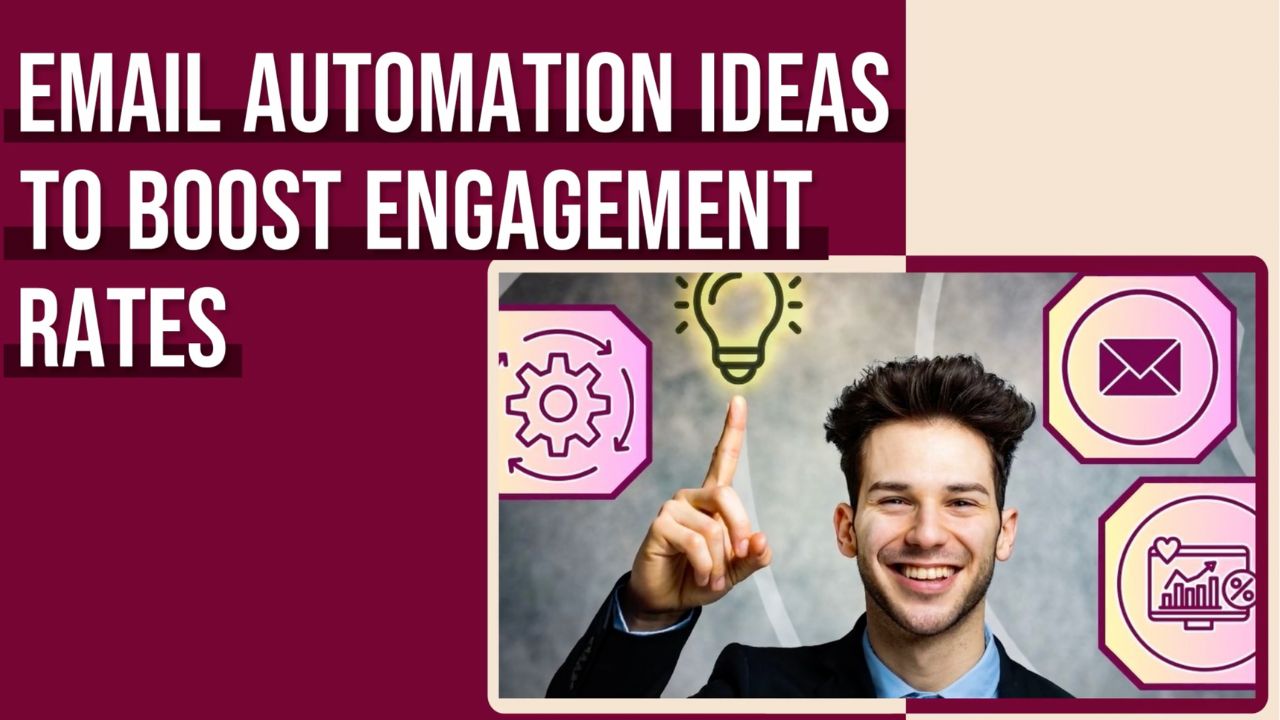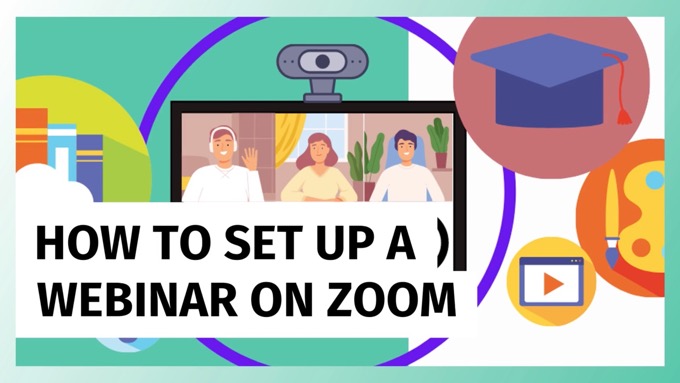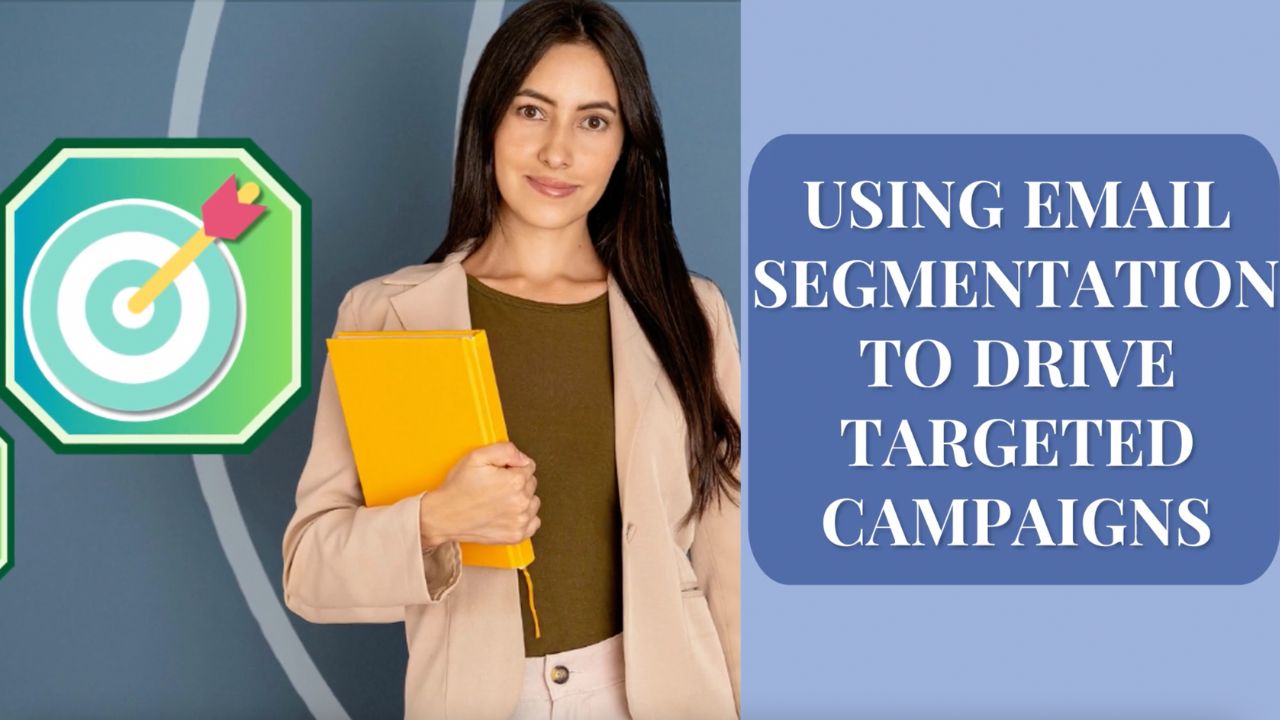Email still delivers—when done right.
But if you’re sending the same campaigns to everyone on your list, you’re missing out on one of the most powerful tools in your digital marketing stack: email automation.
Whether you're struggling to maintain consistency or need better ways to personalize messages at scale, automation can close that gap—and deliver better results.
In this post, you'll get proven, practical ideas for email automation that directly improve engagement, including:
- How to segment your audience for more targeted messaging
- What to include in a high-converting automated welcome series
- Examples of behavior-triggered emails that drive action
- Tactics for re-engaging inactive subscribers
- Ways to integrate automation across tools and platforms for maximum impact
Every strategy you’ll read here is designed to help you send smarter, not just more often.
Let’s get into it...
Understanding Email Automation
Before diving into the creative strategies of email automation, let's clarify what it is and why it's essential for ramping up your engagement rates.
Simply put, email automation is the use of software to send targeted emails automatically, based on specific criteria or triggers that you set.
Here’s why it’s a cornerstone of effective digital marketing:
A welcome email can be triggered the moment someone signs up for your newsletter.
Key Benefits of Email Automation
- Increased engagement—automatically sending personalized emails increases the likelihood of recipients engaging with your content.
- Efficiency boost—automate routine tasks, freeing up time for more strategic activities.
- Enhanced customer experience—deliver a personalized customer journey that nurtures relationships and fosters loyalty.
- Metrics tracking—most automation tools provide analytics that can help you understand what’s working and what’s not, allowing for data-driven decisions.
Start with basic automation such as welcome emails and gradually integrate more sophisticated triggers like behavioral actions and purchase histories to deepen personalization and relevance.
By harnessing the power of email automation, you transform a simple communication tool into a dynamic resource for engaging with your audience effectively and efficiently.
This foundational step sets the stage for the more advanced tactics we’ll explore next, ensuring your email campaigns deliver maximum impact.
Segmentation Strategies for Personalized Emails
One of the pillars of effective email automation is segmentation.
By dividing your email list into specific groups based on set criteria, you can achieve a higher degree of personalization, which directly correlates to better engagement rates.
Here’s how you can master segmentation to make your emails feel like they were written just for the recipient.
3 Steps to Segment Your Email List Effectively
1. Demographic Data
Use bold or colorful visuals that resonate with the demographic group you are targeting.
2. Behavioral Data
3. Engagement Levels
Utilizing Segmentation for Personalization
Advanced email platforms can automate much of the segmentation process using AI and machine learning to analyze patterns and predict the best content for each segment.
Remember, the more tailored your emails are, the more your audience will feel understood and valued.
This doesn't just boost engagement; it builds lasting relationships.
Start implementing these segmentation strategies today, and watch your engagement rates climb!
Automated Welcome Email Series
Creating an engaging automated welcome email series is your first step in establishing a lasting relationship with new subscribers.
These initial interactions set the tone for your brand, making it crucial to get them right.
Your welcome series is your first impression—send an email immediately after signup, follow with helpful content, then invite engagement.Click To Post OnHere’s how to craft a welcome series that not only captivates but also converts.
3 Steps to Set Up Your Welcome Email Series
1. Initial Welcome Email
Include a special welcome discount or a freebie as a thank you for signing up, which can also encourage immediate engagement.
2. Educational Content Email
- What to include? Provide valuable insights or tips related to your industry.
If you’re a digital marketing tool, offer a guide on maximizing ROI with your platform.
Engagement booster—encourage interaction by asking subscribers to follow your social media channels where they can get more daily content.
3. Engagement Email
Best Practices for Your Welcome Series
- Personalization—use the subscriber’s name and tailor the content based on the information they provided during sign-up.
- Clear and concise—keep your messages focused and to the point to respect the reader’s time.
- Consistent branding—ensure your emails reflect your brand’s voice and aesthetics to build brand recognition.
Subscribers who receive a well-structured welcome email series are more likely to engage with future emails.
Make your first impression count with a series that educates, rewards, and invites your new audience into your brand’s community.
Start building your automated welcome series today and transform new sign-ups into loyal followers! 🚀
Behavior-Triggered Emails
Behavior-triggered emails are a cornerstone of effective email automation, turning routine interactions into opportunities for engagement.
These emails are sent based on specific actions your subscribers take, making them highly relevant and timely—two key factors that boost open rates and engagement.
Behavior‑triggered emails turn routine interactions into powerful engagement tools: cart abandonment, browse abandoners, or post‑purchase follow‑ups drive action.Click To Post OnHere’s how you can implement behavior-triggered emails to see real results.
3 Key Types of Behavior-Triggered Emails
1. Cart Abandonment Emails
A user adds items to their cart but leaves without completing the purchase.
Include images of the abandoned items and a clear call to action (CTA) like "Return to Cart".
2. Browse Abandonment Emails
A user views product pages but doesn’t add anything to their cart.
Engagement booster—personalize the email with dynamic content showing the exact products they were interested in. 🚀
3. Post-Purchase Follow-Up
A customer completes a purchase.
This not only enhances customer satisfaction but also encourages repeat business and loyalty.
Implementing Behavior-Triggered Emails
Send a cart abandonment email within 24 hours.
Behavior-triggered emails harness the power of automation to deliver personalized content right when your users are most receptive.
By recognizing and responding to your subscriber’s actions, you not only increase engagement but also enhance the overall customer experience.
Start integrating these triggers into your email strategy today and turn passive browsing into active engagement!
Re-engagement Campaigns
Re-engagement campaigns are crucial for revitalizing your relationship with subscribers who may have grown disinterested or inactive.
These targeted campaigns can reignite their interest and boost your overall engagement metrics.
Here’s how to craft effective re-engagement emails that bring your dormant subscribers back into the fold.
Craft Your Re-engagement Emails
1. Identify Disengaged Subscribers
2. Email Content Strategies
3. Personalization Techniques
Use dynamic content to personalize emails based on their previous interactions or preferences.
Best Practices for Re-engagement Campaigns
- A/B testing—experiment with different subject lines, email designs, and messages to see what resonates best with your disengaged subscribers.
- Clear CTAs—make it easy for them to re-engage by including a prominent call to action, like “Come Back and See What’s New!” or “Reactivate Your Account”.
- Follow-up—don’t stop at one attempt. Plan a sequence of follow-up emails to gradually draw them back in.
Re-engagement campaigns not only help in bringing back inactive subscribers but also provide insights into why they disengaged in the first place, helping you refine your overall email strategy.
By implementing these strategic elements, your re-engagement campaigns can transform inactive subscribers into active participants, enhancing your engagement rates and ultimately, your ROI.
Start reconnecting with your lost audience today and watch your engagement levels soar!
Birthday and Anniversary Emails
Celebrating personal milestones like birthdays and anniversaries with your subscribers can significantly enhance customer loyalty and engagement.
Automated emails for these occasions show you care, making your subscribers feel special and valued.
Here’s how you can utilize birthday and anniversary emails to boost your engagement rates:
Craft Engaging Milestone Emails
1. Personalization Is Key
2. Special Offers
3. Visual Appeal
Best Practices for Birthday and Anniversary Emails
- Timing—ensure these emails are triggered to arrive on the actual date of the birthday or anniversary, or very close to it.
- Segmentation—keep track of these important dates in your CRM system and segment your contacts accordingly. This ensures no one is missed out.
- Testing—a/b test different offers, messages, and designs to see what excites your audience the most.
Beyond just sending a generic message, tailor the content to reflect the subscriber’s interaction with your brand over the past year.
Mention how much you’ve enjoyed having them as a part of your community or reference specific products they’ve shown interest in.
Birthday and anniversary emails are more than just automated greetings—they are an opportunity to connect on a personal level and re-engage your subscribers.
By making each email a personalized celebration of your subscriber's special day, you not only boost engagement but also foster a deeper connection with your audience.
Start planning your celebratory email strategy today and watch your engagement rates bloom!
A/B Testing for Optimizing Email Campaigns
A/B testing, also known as split testing, is an essential technique for optimizing your email campaigns.
This method involves sending two slightly different versions of an email to a small segment of your audience to see which performs better.
By analyzing the results, you can make data-driven decisions that enhance your email effectiveness.
Here’s how to implement A/B testing in your email automation strategy:
Key Elements to Test
5 Steps to Conduct Effective A/B Testing
1. Set a Clear Objective
2. Create Two Variants
3. Select a Segment of your Audience
4. Measure and Analyze Results
5. Implement the Winning Elements
Continuously run A/B tests as part of your ongoing email strategy.
Consumer preferences can shift, and what worked once might not be as effective in the future.
Regular A/B testing not only optimizes individual elements within your emails but also enhances your understanding of your audience’s preferences and behaviors, leading to more effective overall marketing strategies.
By systematically testing and adjusting your emails, you ensure that your audience receives content that resonates best with them, thereby maximizing engagement and conversion rates.
Start integrating A/B testing into your email campaigns today and watch your performance metrics soar!
Advanced Integration Ideas
Integrating email automation with other marketing tools and platforms can dramatically enhance the effectiveness of your campaigns.
By creating a cohesive marketing strategy that spans multiple channels, you can provide a seamless customer experience that drives engagement and boosts retention.
Here are some advanced integration ideas to consider:
CRM Integration
Set up automated triggers based on CRM milestones, like purchase anniversaries or significant customer activities.
Social Media Platforms
- Cross-promotion—use email campaigns to promote your social media content, and vice versa. Include social sharing buttons in your emails and email subscription CTAs in your social posts.
- Targeted ads—leverage email activity to retarget subscribers on social media with ads tailored to their interests and behaviors.
Integrating email with social media can increase touchpoints, reinforcing your message and enhancing brand recall.
Analytics Tools
E-commerce Platforms
- Personalized recommendations—integrate your email system with your e-commerce platform to send personalized product recommendations based on past purchases or browsing behavior.
- Abandoned cart reminders—automatically send targeted emails to users who have left items in their cart, encouraging them to complete their purchase.
Always test and tweak your integrations to ensure they are providing the maximum benefit.
Regularly updating your integration strategies can lead to continuous improvement in engagement and sales.
By strategically integrating your email automation with other key marketing platforms, you not only streamline your workflow but also create a more interconnected and dynamic marketing ecosystem.
Start exploring these integration ideas today to unlock a new level of sophistication in your email marketing strategy! 🚀
Frequently Asked Questions
What is email automation?
Email automation is the use of software to send targeted emails automatically based on specific criteria or triggers.
Why is email automation important?
Email automation enhances timeliness, relevance, scalability, and consistency in communications, improving engagement and efficiency.
How can segmentation improve email engagement?
Segmentation tailors emails to specific groups based on demographics or behavior, increasing personalization and relevance.
What are behavior-triggered emails?
Behavior-triggered emails are sent in response to specific actions taken by subscribers, making them timely and highly relevant.
How does A/B testing optimize email campaigns?
A/B testing compares two versions of an email to determine which performs better, helping to refine campaign elements based on data.
To Conclude
Email automation isn’t just efficient—it’s essential for delivering personalized, timely, and engaging communications that convert.
From smart segmentation to behavior-based triggers and milestone emails, the strategies covered here are built to boost performance and deepen audience relationships.
Start applying them today to turn your email list into a high-performing engagement engine. 🚀








